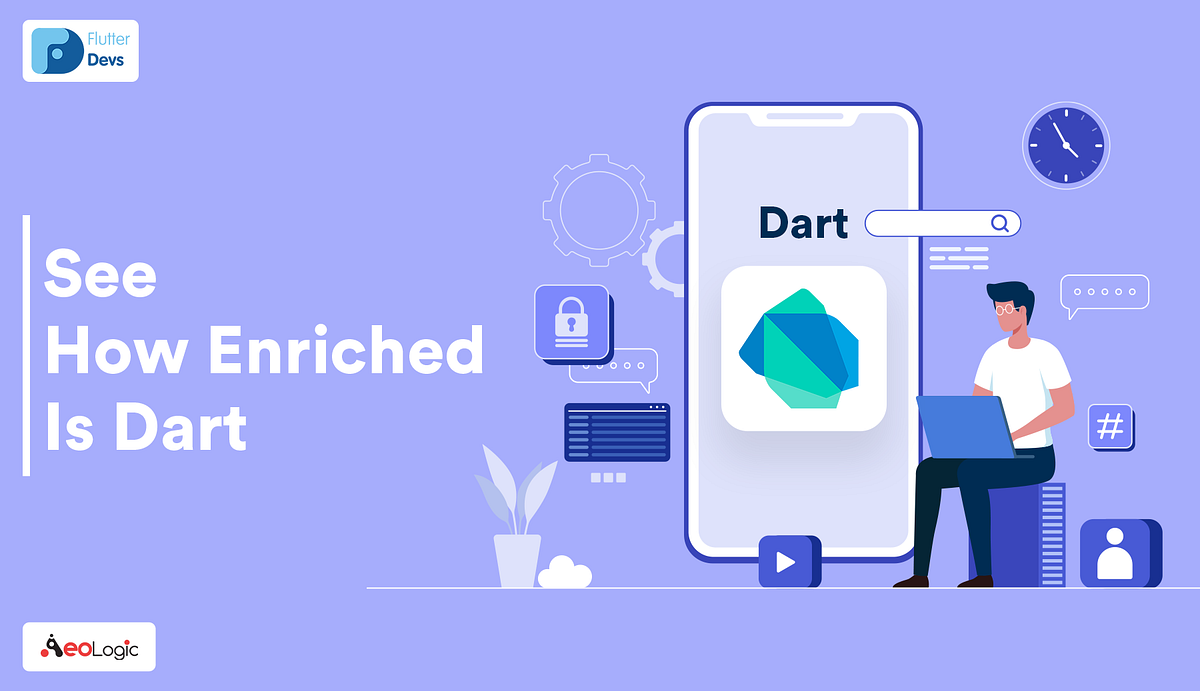Dart and its dynamism are one of the hot topics among developers these days, Since its release in 2007 to till now has been improved simultaneously. Basically, Dart is an open-source programming language that is used for different platforms like developing mobile applications, web, server, desktop, and also for Internet of things(IoT) and it is also declared “Standard ” by Ecma.
It was an introduction that everyone knows but the point of discussion is why and how dart is better (if it is) in different fields if we compare to different languages like java, javaScript, swift.
I am saying this because there are different aspects of Dart which either correlate or totally differ from other languages used for mobile application development.
Dart is an object-oriented language and gives a feel like c and if you are familiar with c or java you will be productive and proficient in the dart. However, when the dart is used in a web application it is transpiled (TRANSlate comPILER) in javascript.
The Dart installation comes with a VM as well to run the .dart files from a command-line interface. The Dart files used in Flutter apps are compiled and packaged into a binary file (.apk or .ipa) and uploaded to app stores.
Some Frequently asked questions are addressed by dart.dev itself you can visit to.
If you are trying to identify the language you use is different, better, equal, or a little less in different aspects then you need to make comparisons with others so we will see some small points and decide where Dart lies on ???
So for that, we will take a glance at the languages which are used widely for backend and frontend(not all some of them like javaScript). As you know that when react-native was introduced by Facebook the demand for javaScript went all-time high and swift has also its separate user base.
- Dart can be compiled both AOT and JIT which helps building apps in several ways as using JIT compilation can speed up development and AOT compilation can be used during the release process for better optimization. This technique has been used in Flutter app development
- Dart coding looks like most ALGOL languages such as C, java so there is not a big difference in syntax, that makes anyone able to learn easily. Things like the Flow of statements such as loops, conditions, breaks are similar.
- Abstraction works in a similar manner, allowing abstract classes and interfaces.
- if you are familiar with java you know that you need to declare everything explicitly like which type of String, int, etc but in dart you need not do that it refers according to values nature.
- In Dart, all data types are objects including numbers. si if you don’t initialize then the value will be counted null not Zero.
- All data types are objects, including numbers. So, if left uninitialized, their default value is not a 0 but is instead null.
- It has a new inbuilt data type called Runes, that deal with UTF-32 code points in a string. For a simple example, see emojis and similar icons.
- Dart also has inbuilt libraries installed in the Dart SDK, the most commonly used being:
dart:core for core functionality; it is imported in all dart files.
dart:async for asynchronous programming.
dart:math for mathematical functions and constants.
dart:convert for converting between different data representations, like JSON to UTF-8.
#flutter #dart #cross-platform #features #flutter-widget
